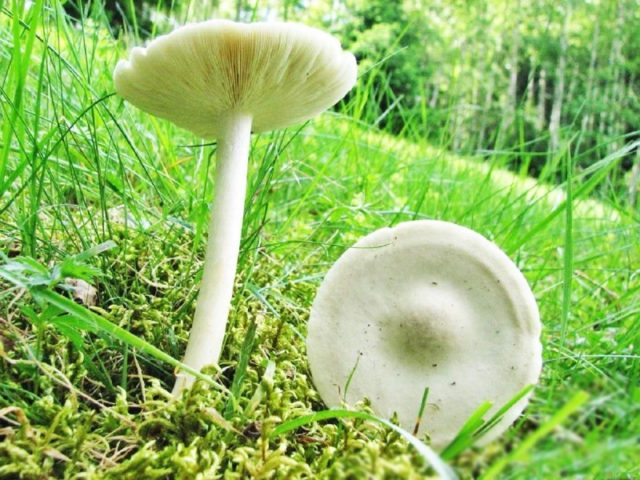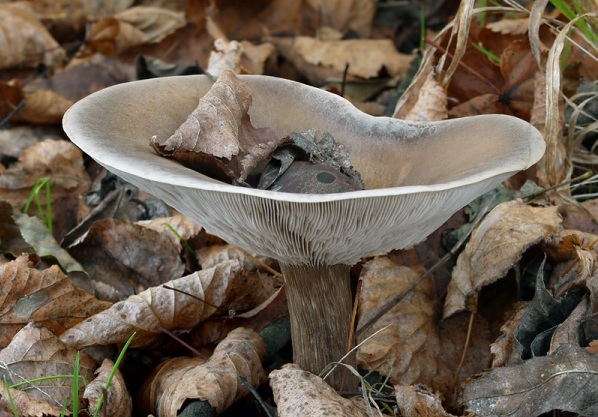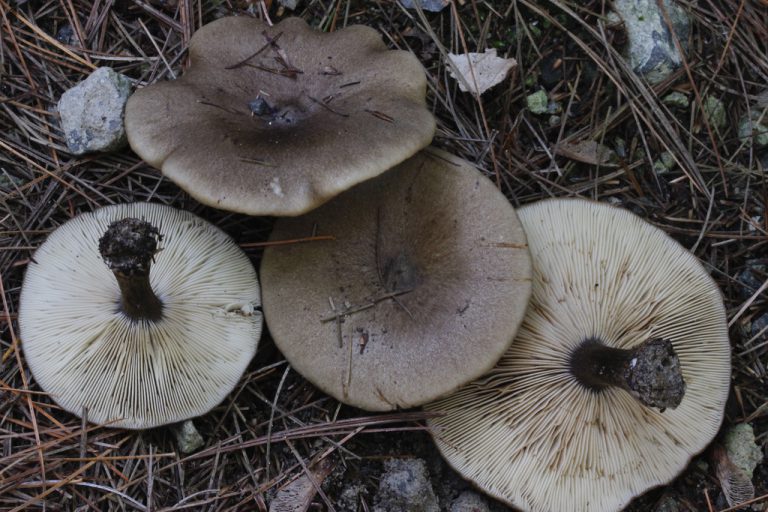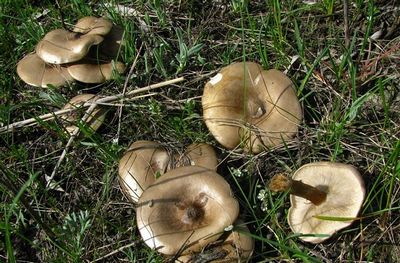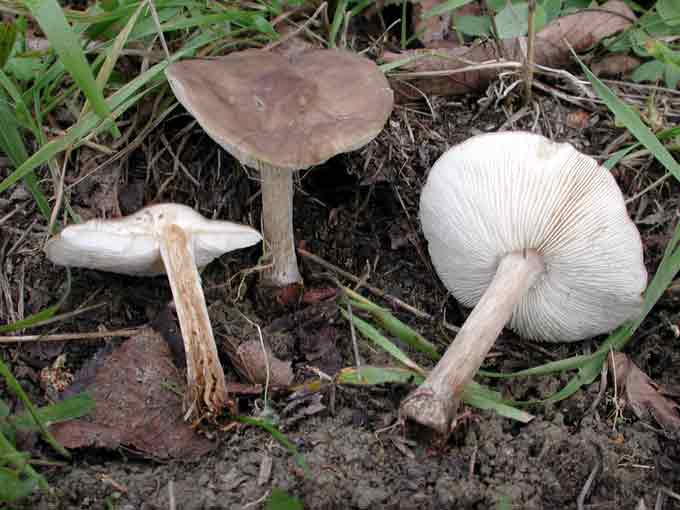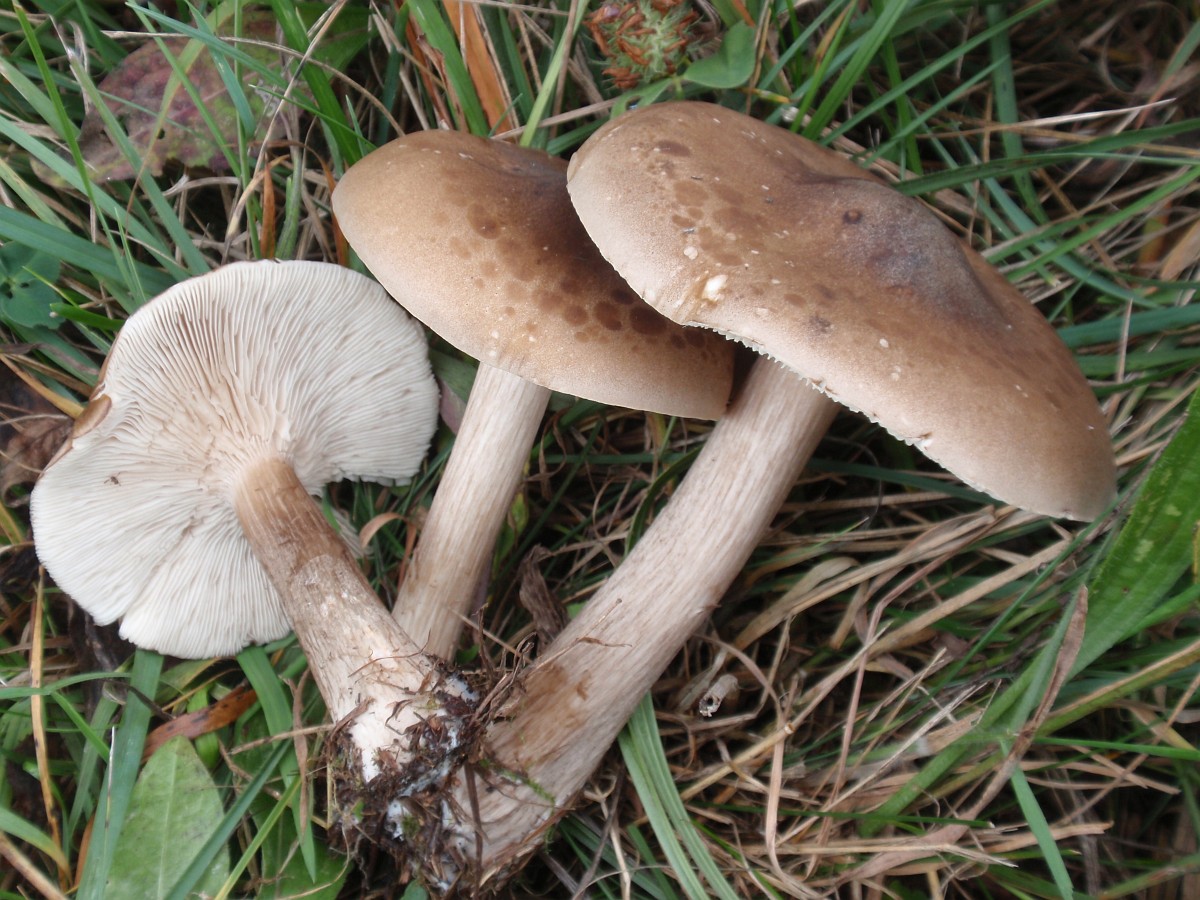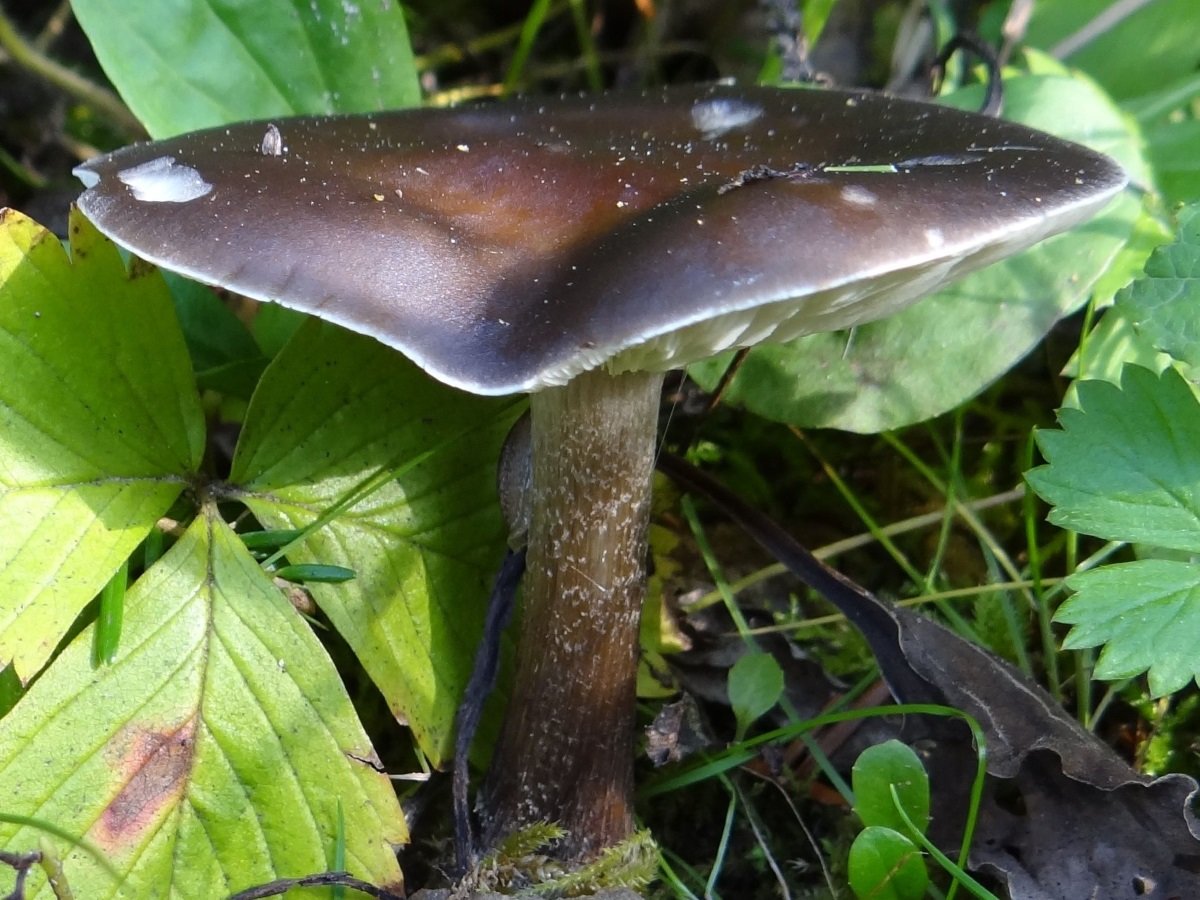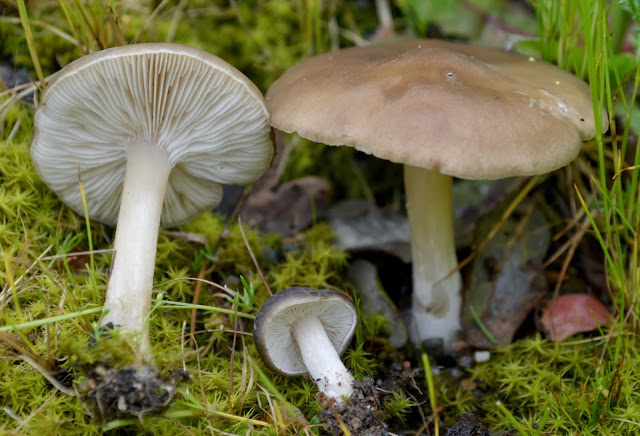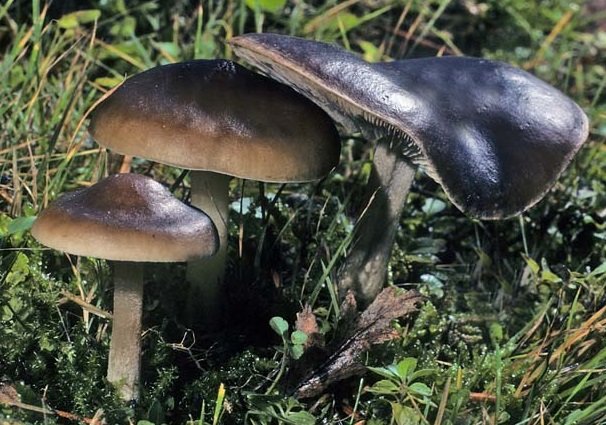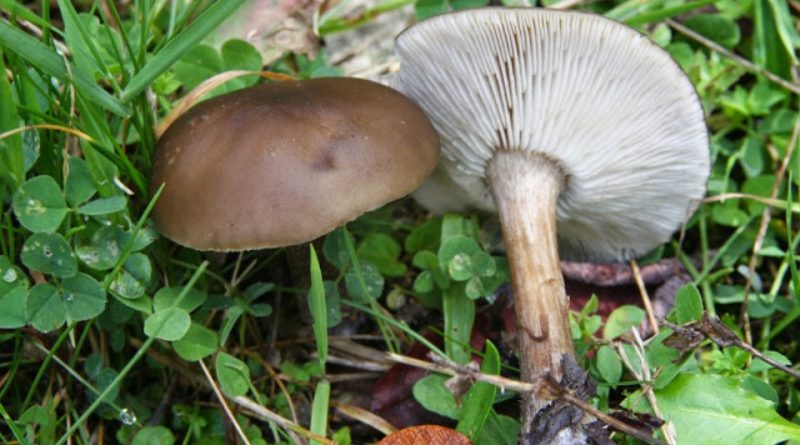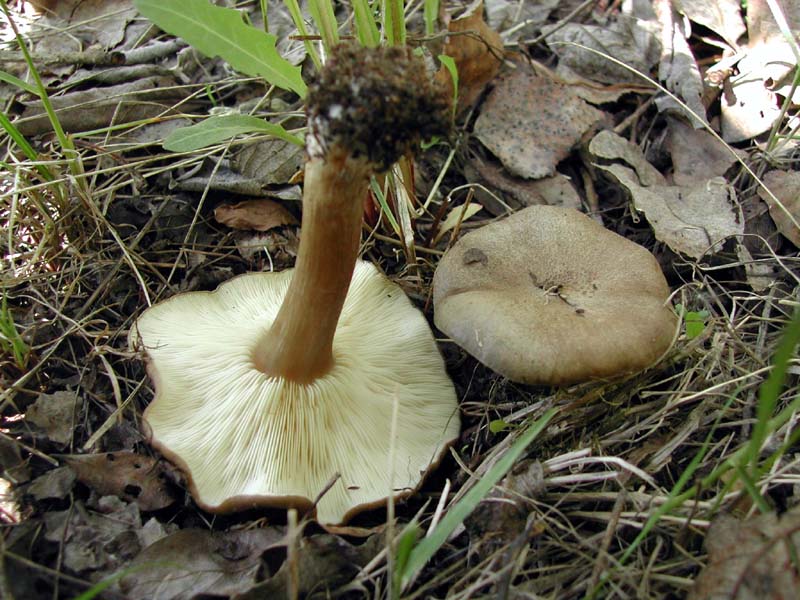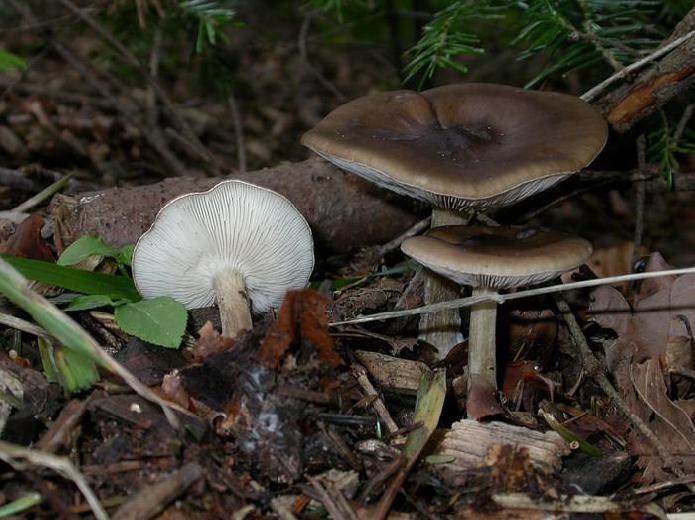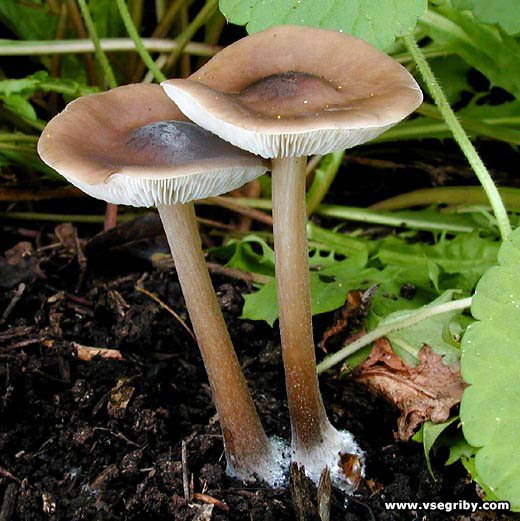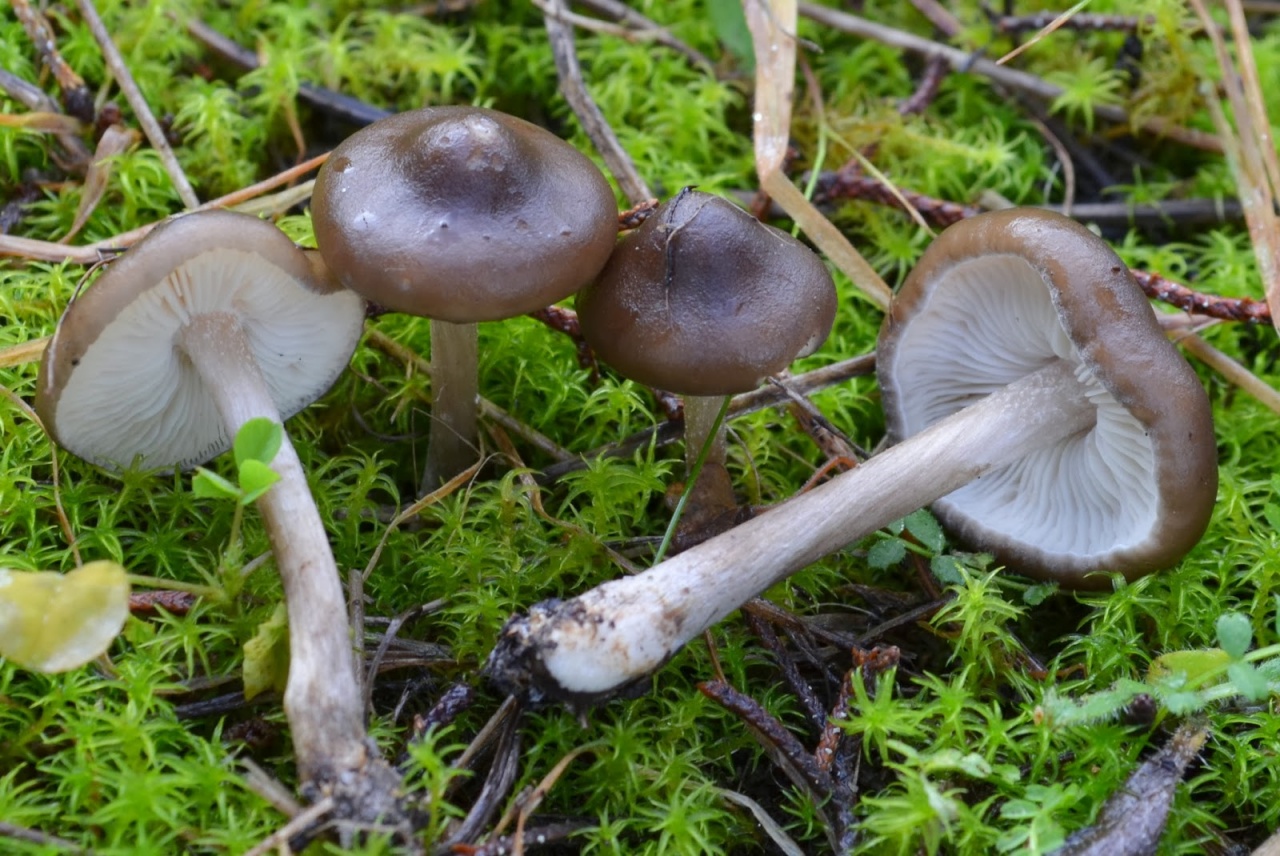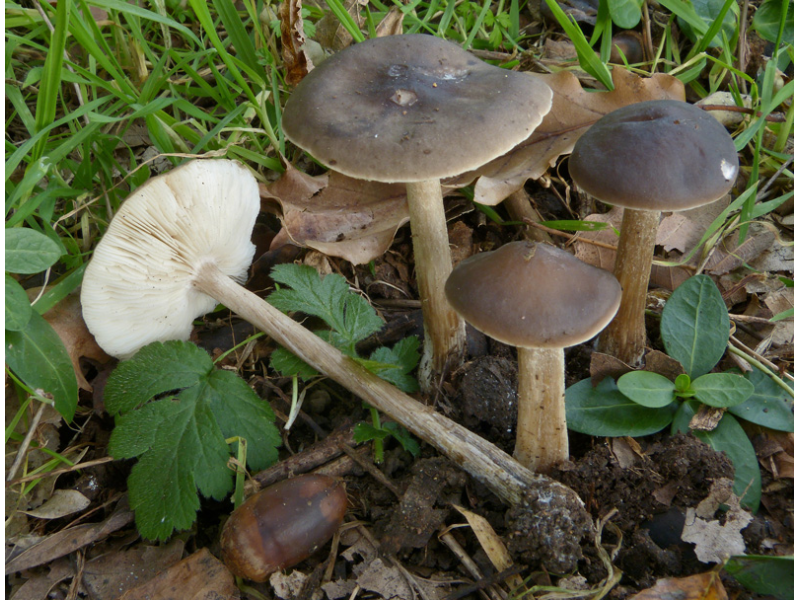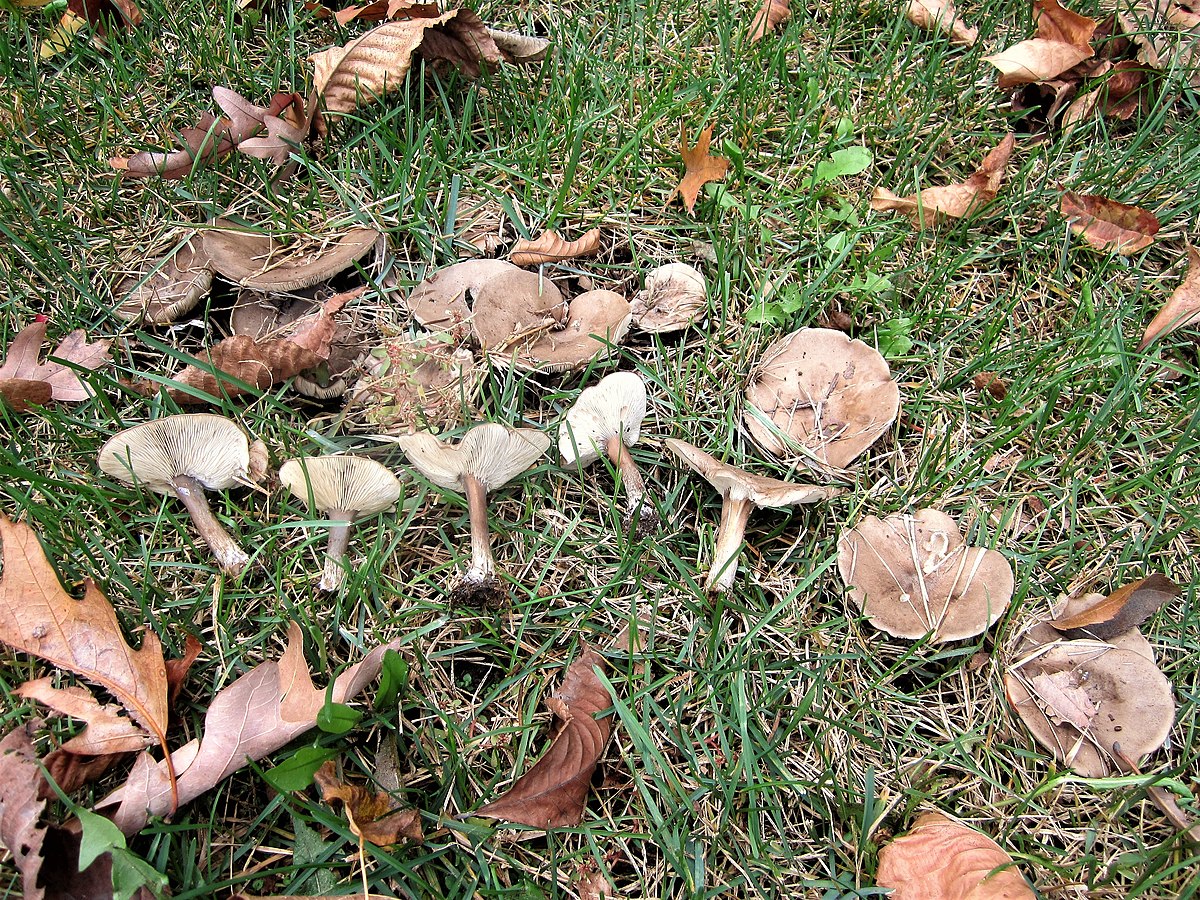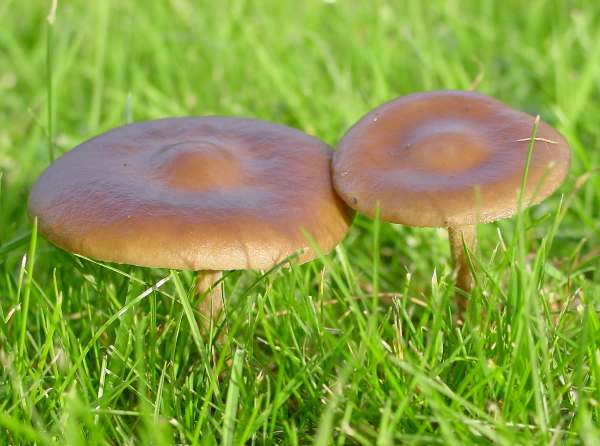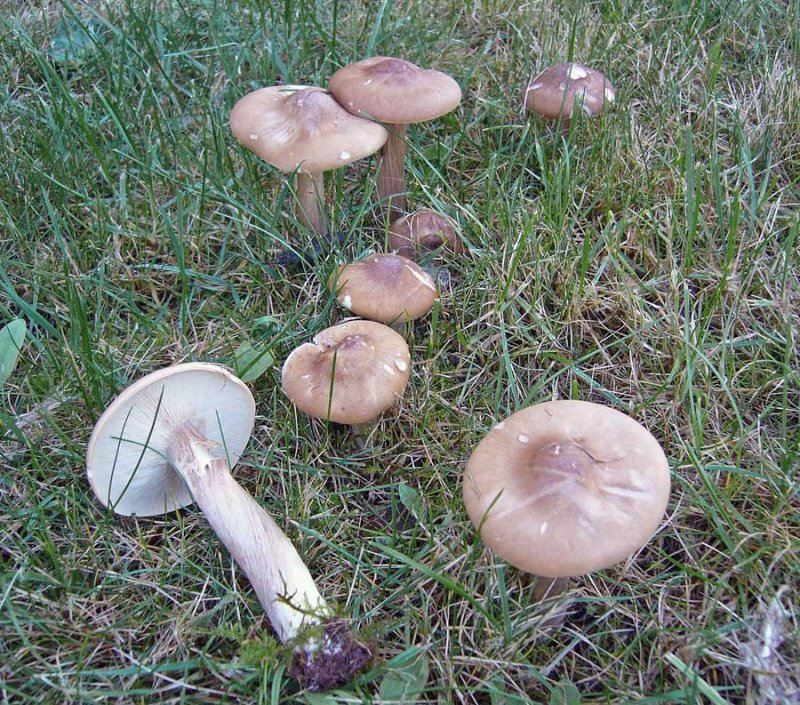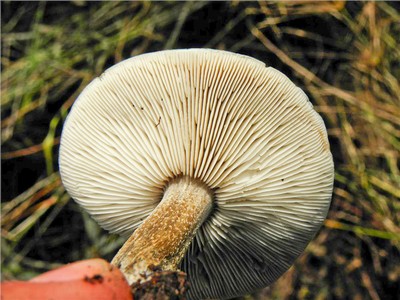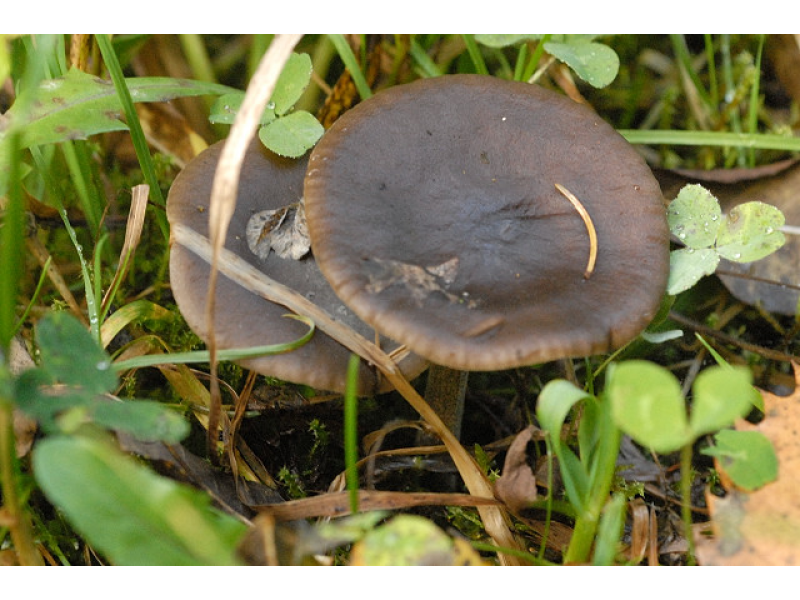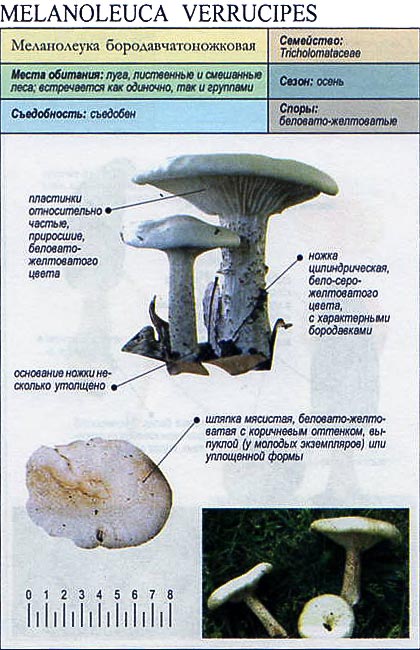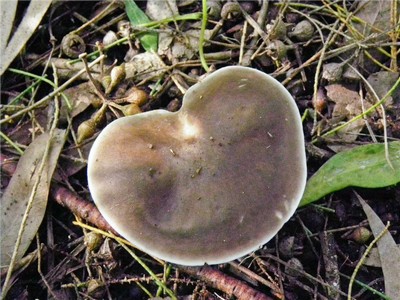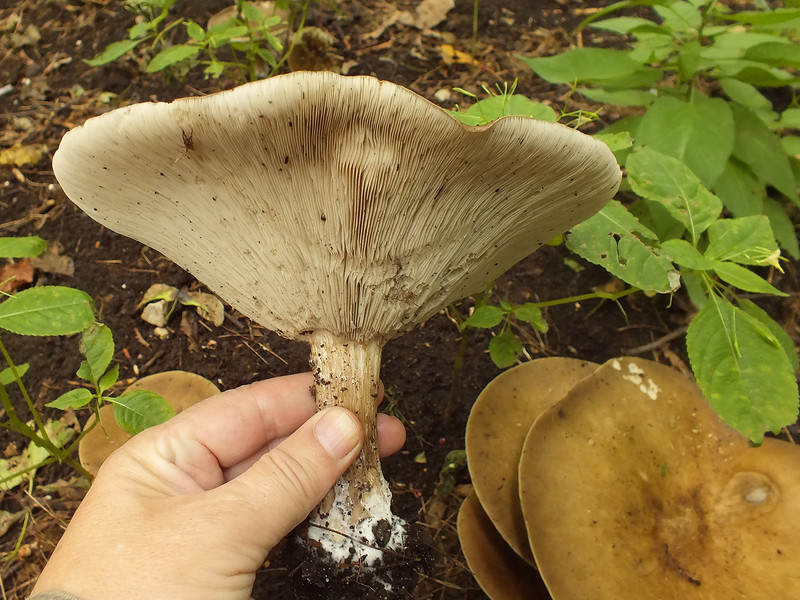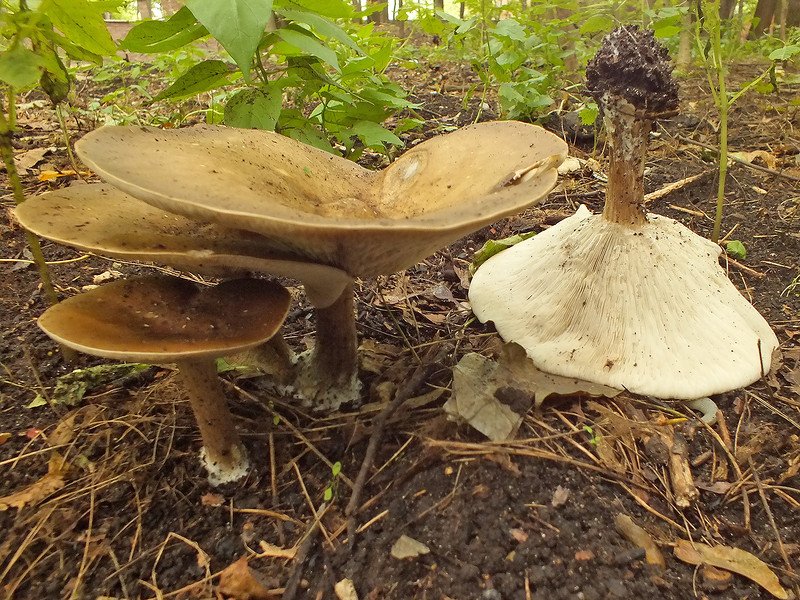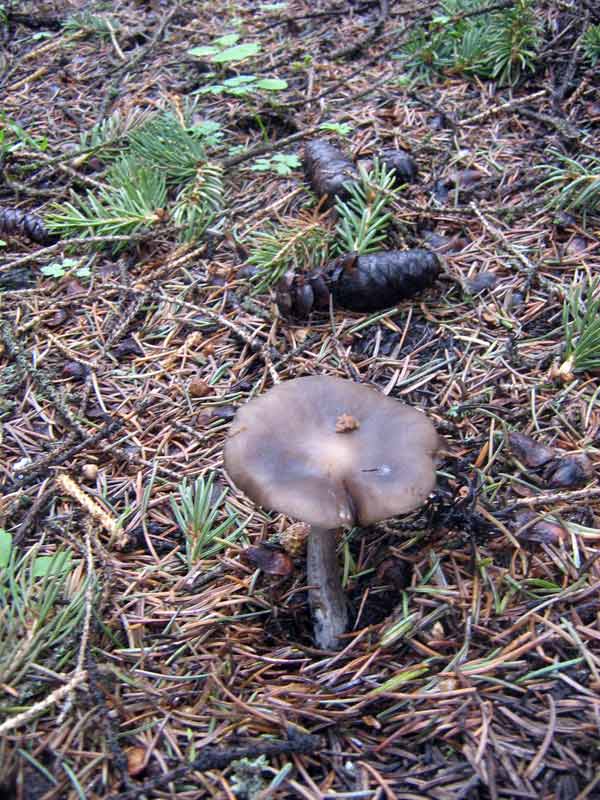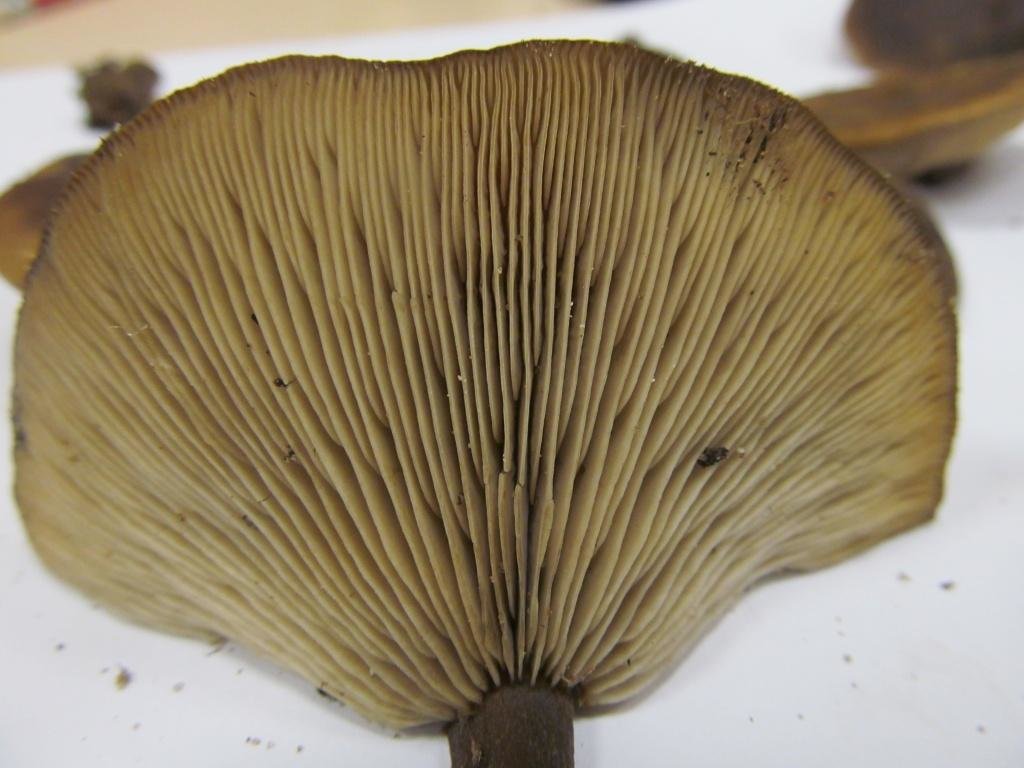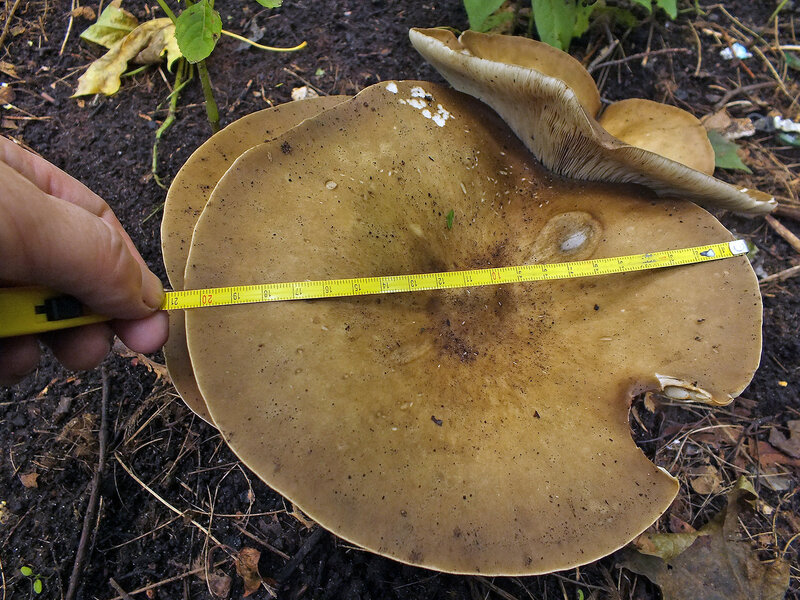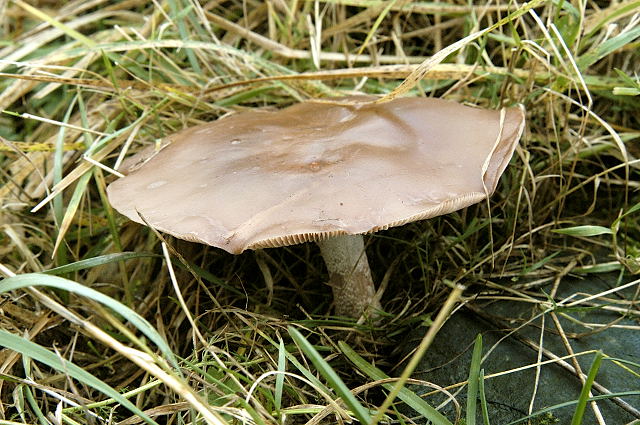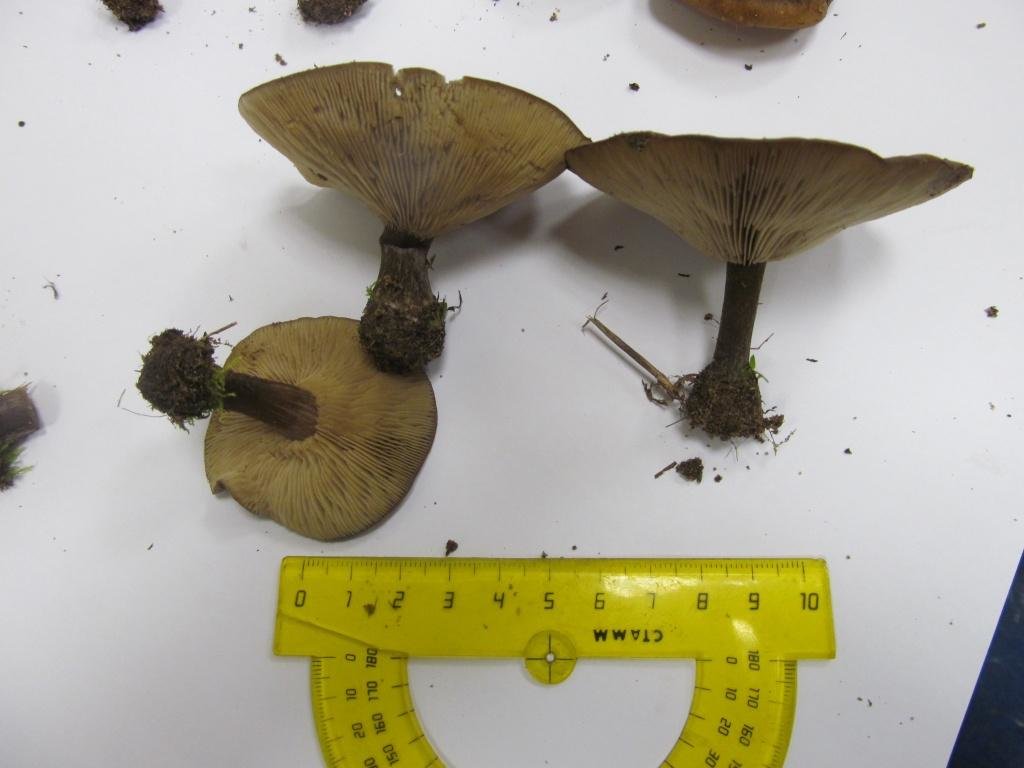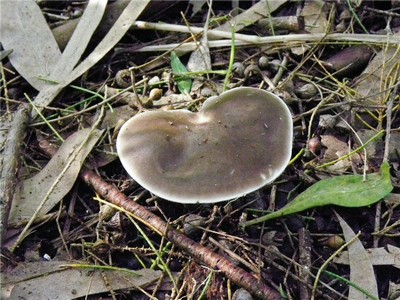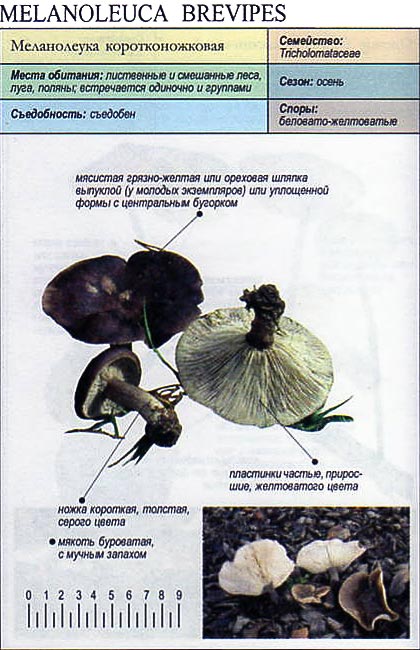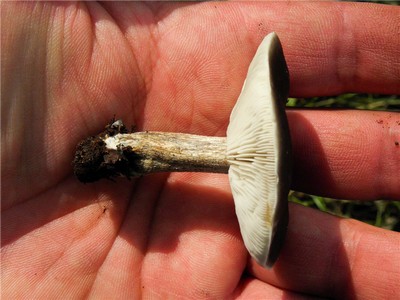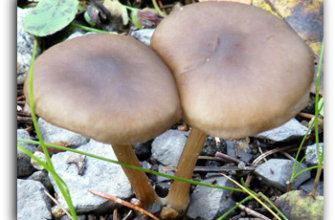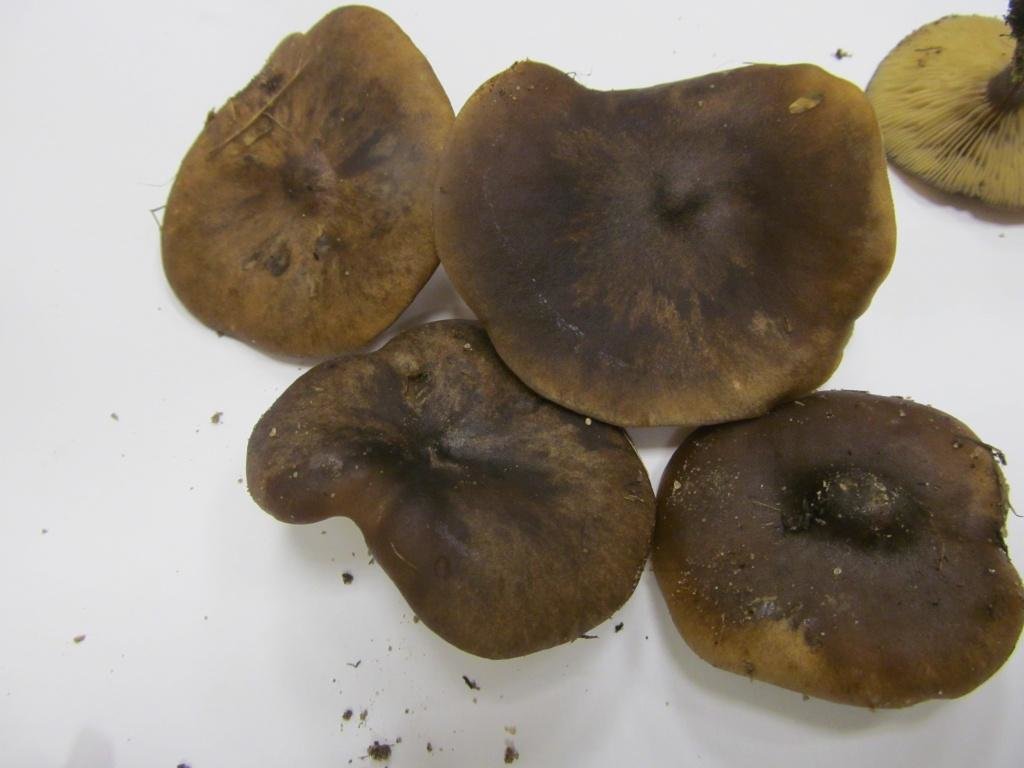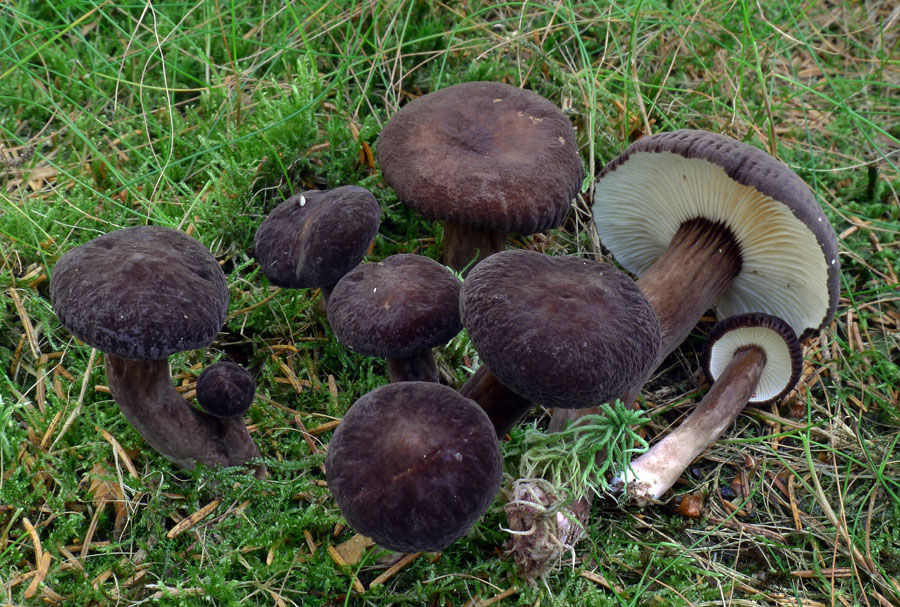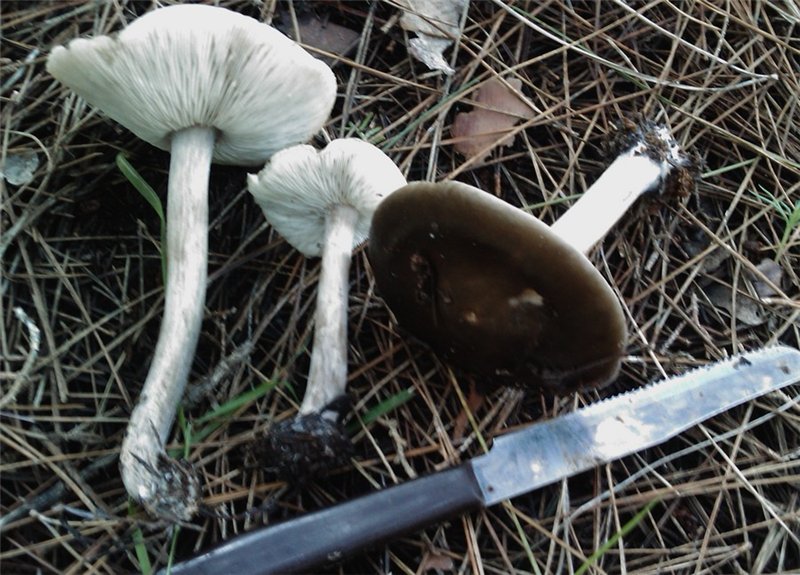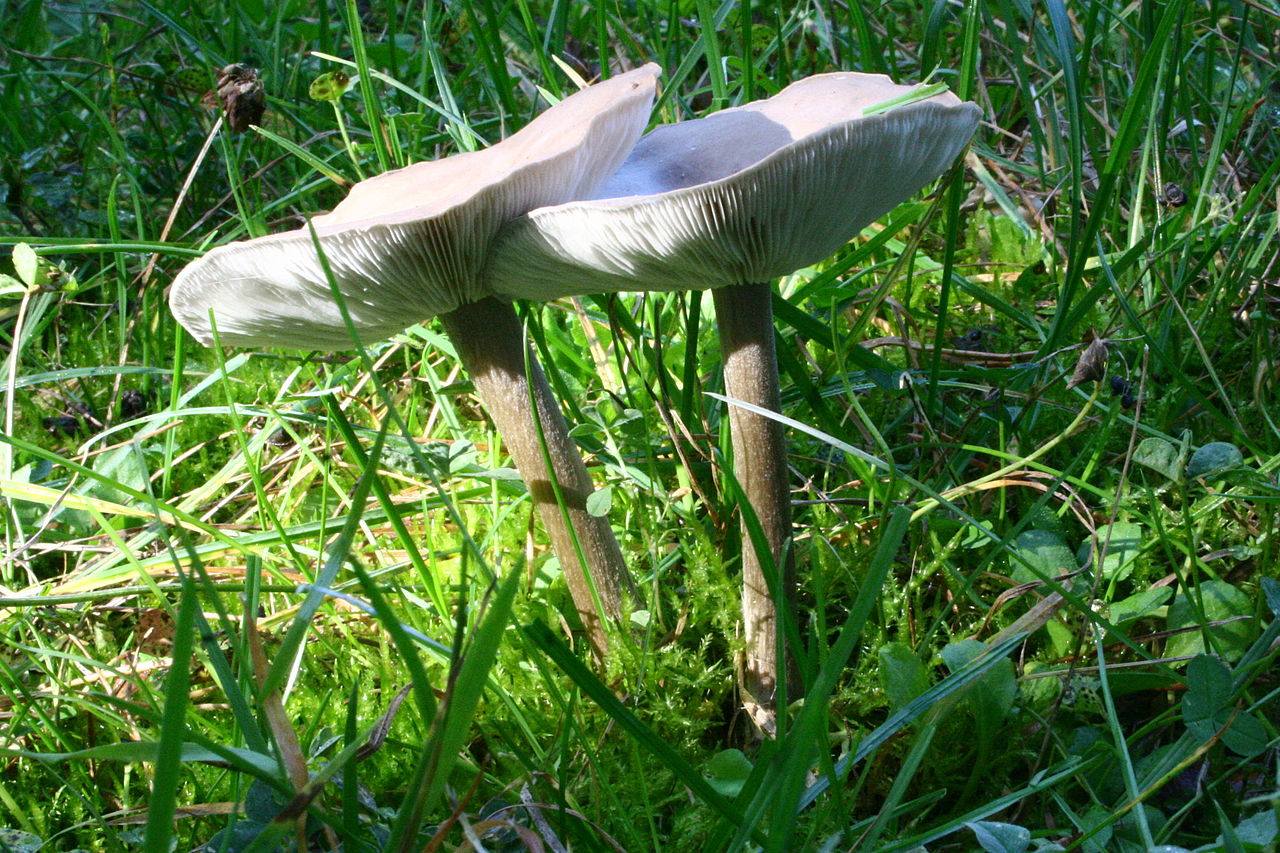Mushrooms of Russia (34 pages)
Hat. Diameter up to 15 cm, at first hemispherical, later cushion or prostrate. Sometimes with upward curved edges. The skin is slimy, oily (hence the name), later dry, easily removable. The color is brownish, yellowish, coffee with a more or less pronounced purple tint. The tubules are pale yellow, yellow, olive-yellow, adherent to the stem or slightly descending. The pulp is firm, soft, white or lemon-colored. The taste and smell are pleasant.
Leg. Height 3–8 cm, diameter up to 2 cm, cylindrical, dense, fibrous. The pedicle has a filmy ring, at first white, covering the filmy layer, then dirty purple and finally brown, adherent to the pedicle. Leg above the ring is yellowish-white, covered with specks, darker under the ring.
Spore powder. Ocher brown.
Habitat. In pine forests and plantings on acidic fertile soils.
Season. Appears in May - June and bears fruit before frost in several layers, which, depending on the weather, can be 3-5.
Similarity. With granular oiler (S. granulatus), which prefers open places with lonely standing pines and is found on calcareous soils, as well as with other types of boletus.
Use. You can fry, pickle, salt, dry. It is better to remove the peel from the cap, then the marinade will be of a beautiful coffee color.
Medicinal properties. According to some sources, it contains anticancer agents.
Melanoleuca black and white
Melanoleuca black and white (lat.Melanoleuca melaleuca).
Other names:
- Melanoleuca cognata
- Melanoleuca vulgaris
- Melanolevka ordinary
Melanoleuca black and white is an edible lamellar mushroom that grows singly from late July to mid September. Most often, it can be found in open areas of mixed and deciduous forests, in gardens, parks, meadows and along roadsides.
Hat
The cap of the mushroom is convex; in the process of growth, it gradually flattens, becoming prostrate, with a slight bulge in the middle. Its diameter is about 10 cm. The surface of the cap is smooth, matte, with a slightly pubescent edge, painted in a grayish brown color. In hot dry summers it fade to a pale brown color, retaining its original color only in the center.
Leg
Stem thin, rounded, 5-7 cm long and about 0.5-1 cm in diameter, slightly widened, with a root nodule or curved to the side, dense, fibrous, longitudinally ribbed, with longitudinal black hair fibers, brownish-brownish. Its surface is matte, dry, brownish in color, on which longitudinal black furrows are clearly visible.
Pulp
The flesh in the cap is soft, loose, elastic in the stem, fibrous, initially light gray, brown in mature mushrooms. Has a subtle spicy scent.
Places and times of collection
Melanoleuca black and white most often settles on rotting brushwood and fallen trees in forests.
In deciduous and mixed forests, parks, gardens, meadows, glades, forest edges, in light, usually grassy places, along the roadsides. Singles and in small groups, not often.
In the Moscow region, it is often found throughout the entire region from May to October.
Edibility
It is considered an edible mushroom, used fresh (boiled for about 15 minutes).
No poisonous species are found among representatives of the genus Melanoleuca
It is better to collect only caps that can be boiled or fried, the legs are fibrous-rubbery, inedible.
The mushroom is edible, little known. It is consumed fresh and salted.
Melanoleuca striped
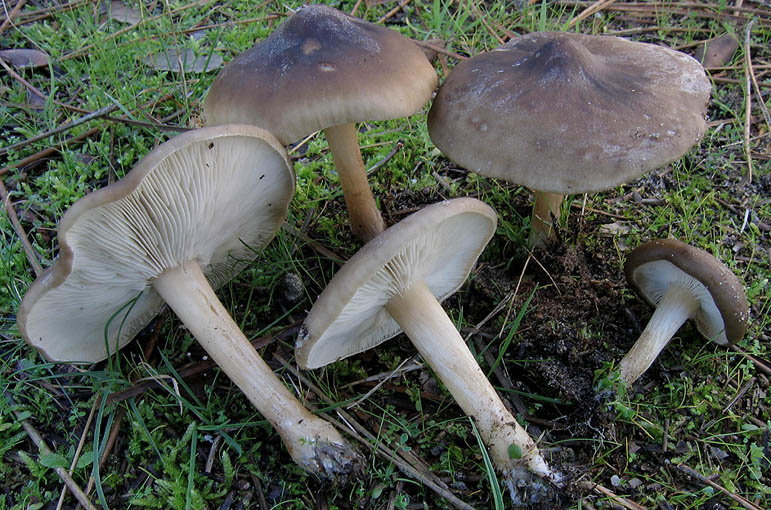
Melanoleuca striped (Melanoleuca grammopodia)
Synonyms for the main name of the species are Latin terms:
- Melanoleuca grammopodium,
- Gyrophila grammopodia,
- Tricholoma grammopodium,
- Entoloma placenta.
Malanoleuca striped (Melanoleuca grammopodia) is a mushroom of the Tricholomataceae family.
External description of the mushroom
The fruiting body of striped melanoleuca consists of a cylindrical and slightly thickened leg at the bottom, and an initially convex and subsequently outstretched cap.
The length of the mushroom leg does not exceed 10 cm, and its diameter varies within 0.5-2 cm. Longitudinal fibers of a dark brown color are visible on the surface of the leg. If you cut off the leg at the base, then that place is sometimes brown or dark gray in color. The leg is characterized by great rigidity.
The diameter of the mushroom cap can be up to 15 cm. In mature mushrooms, the cap is characterized by a lowered edge, high density, a depressed surface and a characteristic tubercle in the center. The top layer is smooth and matte skin, which can be slightly shiny. The color of the cap of the striped-legged malanoleuca is different: off-white, ocher, nutty. As the mushroom matures, the color of the cap becomes faded.
The lamellar hymenophore, located on the inner side of the cap, is represented by often located, convoluted plates, which can sometimes be forked, serrated and grow to the stem of the fungus. Initially, the plates are white, but later become creamy.
The pulp of the described type of mushroom is elastic, has a whitish-gray color, and in ripe fruit bodies it becomes brown. The smell of the pulp is inexpressive, but often unpleasant, musty and mealy. Her taste is sweetish.
Habitat and fruiting period
Melanoleuca striped (Melanoleuca grammopodia) grows in deciduous and mixed forests, in parks, gardens, pine forests, meadows, meadow areas, forest edges, well-lit grassy places. Sometimes it grows on the side of roads, in groups or singly. When warm weather is established in the spring, striped-legged malanoleucks can appear even in the month of April, but usually the period of mass fruiting of this type of mushroom begins in May. From July to September, small groups of striped-legged malanoleuca or solitary mushrooms are found in spruce forests.
Edibility
The mushroom is edible, it can be consumed in any form, even fresh, without prior boiling. Melanoleuca striped is good when boiled.
Similar species, distinctive features from them
There are no similar types of mushrooms in melanoleuca striped-legged.
Mushroom photo Melanoleuca striped from questions in recognition:
Nutrition for melanoma
General description of the disease
Melanoma is the most dangerous type of skin cancer that develops from pigment cells (melanocytes). Sometimes the disease affects not only the skin, but the retina, mucous membranes (vagina, oral cavity, rectum).
Prerequisites for the development of melanoma
Excessive exposure to ultraviolet light of sensitive skin or radiation, the presence of a large number of freckles or moles, age over 50 years, nevus injury, hormonal changes in the body, Dubreus melanosis, genetic predisposition, xeroderma pigmentosa, male sex.
Signs of melanoma are changes in the mole (nevus):
increased growth of a mole, a change in its surface, uneven compaction, weakening or increased color, the appearance of an erythematous border, hair loss in the area of the nevus, pinpoint pigmentation on the skin around the mole, bleeding of the nevus, burning, itching, soreness.
Varieties of melanoma:
- malignant lentig;
- superficially spreading melanoma;
- acral-lentiginous form of melanoma;
- nodular melanoma;
- melanoma with a phase of radial growth that is not classified.
Depending on the causes of the occurrence:
- melanoma that arises from precancerous melanosis or Hutchinson's melanotic spot;
- melanoma, which arises from a blue nevus;
- melanoma that arises from a large pigmented nevus.
Healthy foods for melanoma
The diet for melanoma should be complete, with the required amount of protein, calories and a minimum amount of saturated fat. Try to cook food without fat (steam, in a special pot or in the oven), do not follow extreme diets and do not consume large doses of individual supplements, foods or vitamins. The diet should include:
- green tea;
- spices (camun, turmeric, cumin, saffron and rosemary);
- fish rich in omega-3 acid (salmon, sardine, mackerel, tuna);
- foods with unsaturated, monounsaturated or polyunsaturated fats (sunflower, soy, corn oil, fish oil, olives and peanuts);
- boiled or raw vegetables;
- fruits and fresh fruit juices (apples, cherries, blueberries);
- low-fat and natural dairy products (milk, yogurt, kefir and cheese);
- complex hydrocarbons (bran bread, durum pasta, brown rice, porridge);
- simple, purified water in large quantities;
- Selenium-containing foods (baked chicken breast, turkey, low-fat homemade cheese, selenium-fortified bread, cheddar cheese, Brazil nuts, pork and lamb kidneys, lobster, squid, mussels, oysters, shrimps);
- cruciferous vegetables (Brussels sprouts and cabbage, cauliflower, kohlrabi, broccoli, Chinese cabbage, radish, turnip, horseradish and rutabaga);
- wasabi sauce;
- kelp (seaweed);
- lycopene (natural ketchup, tomato sauce, fresh tomatoes, tomato juice);
- leafy greens (parsley, dill, celery, spinach, green onions, rhubarb, watercress, parsnips, sorrel, wheat germ, edible seaweed);
- dietary fiber (components of plant cells, fiber).
Folk remedies for melanoma
- stone oil (five grams of stone oil per 0.5 liters of water, insist for three days, drain the resulting residue) to use for frequent lotions;
- kirkazon root (half a glass of crushed root, one teaspoon of sour cream, pour a glass of honey with 3 liters of water, insist warm for a week), take half a glass before meals for two months;
- Lycopodium pollen is used to dust the affected skin;
- decoction of lycopodium (boil one spoonful of pollen for fifteen minutes in a glass), take one glass a day;
- use juniper berries for compresses in gauze;
- use yeast (thick solution) for compresses, covering with a thin towel on top;
- marshmallow primark (in equal proportions, pour the flowers or root with water, boil for fifteen minutes, insist for two hours);
- freshly squeezed sea buckthorn juice.
Dangerous and harmful foods for melanoma
Exclude the following foods: fatty foods and foods high in trans fats (lard and fatty meats, butter and ghee, mayonnaise, pizza, burgers, sandwiches, fast food, fatty pork and beef, milk chocolate, sweets, fried foods, pastries, ice cream, coffee and milkshakes).
Limit the use of such products as: foods containing omega-6 (eel fat, vegetable oils (rapeseed, linseed, cottonseed, sunflower, soybean, hemp, safflower), pumpkin and sunflower seeds, nuts (pine nuts, pistachios), eggs, offal, animal fats and butter).
Melanoleuca short-legged: description and photo
| Name: | Melanoleuca short-legged |
| Latin name: | Melanoleuca brevipes |
| Type of: | Edible |
| Synonyms: | Short-legged melanolecus, Short-legged melanoleke, Agaricus brevipes, Gymnopus brevipes, Tricholoma brevipes, Gyrophila brevipes, Gyrophila grammopodia var brevipes, Tricholoma melaleucum subvar brevipes |
| Specifications: | |
| Systematics: |
|
Melanoleuca (melanoleuca, melanoleuca) is a poorly studied species of edible mushrooms, represented by more than 50 varieties.Its name comes from the ancient Greek "melano" - "black" and "leukos" - "white". Traditionally, the species is considered to be in the Ryadovkovy family, but recent DNA studies have revealed their relationship with the Pluteyevs and Amanitovs. Short-legged melanoleuca is an easily recognizable mushroom. He has external features, thanks to which he cannot be confused with any other.
Collection rules
Fruit bodies ripen from early summer to September. The short stem of the mushroom "sits" loosely in the ground, so it will not be difficult to remove it from there.
When collecting melanoleuca, important rules must be followed:
- it is best to go to the forest for mushrooms in the early morning, until the dry dew begins;
- warm nights after heavy rains - perfect weather for a wonderful mushroom harvest;
- it is not necessary to collect rotten, overripe, withered, mechanically or insect damaged specimens, since they have already begun to release toxins;
- an excellent container for collecting mushrooms - wicker baskets that provide easy access to air, polyethylene bags are definitely not suitable;
- The short-legged melanoleucus is best cut with a knife, but it is quite possible and careful to pull it out, slightly twisting and swinging it from side to side.
Although it is a non-poisonous mushroom, it should not be tasted raw.
Definitioner
- Basidia (Basidia)
-
Lat. Basidia. A specialized structure of sexual reproduction in fungi, inherent only in Basidiomycetes. Basidia are terminal (end) elements of hyphae of various shapes and sizes, on which spores develop exogenously (outside).
Basidia are diverse in structure and method of attachment to hyphae.
According to the position relative to the axis of the hypha, to which they are attached, three types of basidia are distinguished:
Apical basidia are formed from the terminal cell of the hypha and are located parallel to its axis.
Pleurobasidia are formed from lateral processes and are located perpendicular to the axis of the hypha, which continues to grow and can form new processes with basidia.
Subasidia are formed from a lateral process, turned perpendicular to the axis of the hypha, which, after the formation of one basidium, stops its growth.
Based on morphology:
Holobasidia - unicellular basidia, not divided by septa (see Fig. A, D.).
Phragmobasidia are divided by transverse or vertical septa, usually into four cells (see Fig. B, C).
By type of development:
Heterobasidia consists of two parts - hypobasidia and epibasidia developing from it, with or without partitions (see Fig. C, B) (see Fig. D).
Homobasidia is not divided into hypo- and epibasidia and in all cases is considered holobasidia (Fig. A).
Basidia is the place of karyogamy, meiosis and the formation of basidiospores. Homobasidia, as a rule, is not functionally divided, and meiosis follows karyogamy in it. However, basidia can be divided into probasidia - the site of karyogamy and metabasidia - the site of meiosis. Probasidium is often a dormant spore, for example in rust fungi. In such cases, probazidia grows with metabasidia, in which meiosis occurs and on which basidiospores are formed (see Fig. E).
See Karyogamy, Meiosis, Gifa.
- Pileipellis
-
Lat. Pileipellis, skin - differentiated surface layer of the cap of agaricoid basidiomycetes. The structure of the skin in most cases differs from the inner flesh of the cap and may have a different structure. The structural features of pileipellis are often used as diagnostic features in descriptions of fungi species.
According to their structure, they are divided into four main types: cutis, trichoderma, hymeniderma and epithelium.
See Agaricoid fungi, Basidiomycete, Cutis, Trichoderma, Gimeniderm, Epithelium.
Melanoleuca striped (Melanoleuca grammopodia)
 Melanoleuca striped (Melanoleuca grammopodia) photo
Melanoleuca striped (Melanoleuca grammopodia) photo
Grows in deciduous forests and shrubs, in grassy areas near the edges and roads, in small groups and single specimens, from mid-July to September. The cap is 7-15 cm in diameter, prostrate, with a tubercle, grayish-brown, grayish-brown or reddish, fading, smooth. The pulp in the center of the cap is thickened, white or grayish-brownish. The smell is strong, flour.
The plates are frequent, adherent, white or cream, wide. Spore powder is white. Leg 7-12 cm long, 1-1.5 cm thick, cylindrical, tuberous-thickened below, dense, elastic, whitish, with dark brown longitudinal fibrous stripes. Melanoleuca striped edible, fourth category.
It is used boiled.
Description
- Cap: 3.5 to 8 cm, low convex, often with low umbo, smooth, dark brown fading to greyish brown.
- Gills: Whitish, crowded, emarginately attached to the stem of the mushroom.
- Stipe: 10 cm long and usually 1 cm thick, also dyed to the cap, but lighter, with longitudinal fibers.
- Controversy: 6.5 - 8.5 x 5 - 6 µm, elliptical with starchy warts (staining blue in Melzer's reagent), white spore seal.
- Scent: weak.
- Microscopic features: May or may not have cheilocystidia (see below in the taxonomy section).
- Habitat: Grassy areas in forests, roadsides, wastelands, etc.
This description is taken from several references, which are usually agreed with the exception of microscopic features.
Various authorities imply that there is a complex of closely related species around M. melaleuca without clear dividing lines, and that the current analysis (which varies from one to the other) requires more clarification.
Most of the taxonomic work on Melanoleuca has been done in Europe, and the status of the North American specimens is less certain; the situation is probably even more complicated when the relevant international mushrooms are taken into account
Taxonomy and related species
And the varieties are called melaleuca and the name of the genus, Melanoleuca come from the same ancient Greek words for black (melas) and white (leukos). The species name was coined by the Swedish mycologist Persoon in his Summary of the 1801 publication by Methodica Fungorum how Agaricus melaleucus... This formed the basis for the genus name. Melanoleucawhich was invented by Narcisse Théophile Patuillard in 1897 as a variant Melaleuca.
The underside of the cap is whitish and the top of the cap and base is often quite dark brown, but “black and white” is not a very accurate description in practice.
The names of the species of common animals are often identical to their genus names (as with Rattus rattus or Bufo comic), but this form of designation (known as a tautonym) is prohibited for plants and fungi by the International Code of Nomenclature. Melanoleuca melaleuca narrowly circumvents this rule.
Patouillard originally named the genus Melaleuca in 1887 and named the species Melaleuca type vulgarisapparently to avoid the tautonym. In 1897 Patouillard changed the genus name to Melanoleuca... According to modern nomenclatural rules, the older genus name should usually take precedence, but an exception was made by the International Botanical Congress, and Melanoleuca was announced nomen conservandum, that is, a name to be considered valid regardless of precedence rules.
American mycologist William Merrill created the name Melanoleuca melaleuca in the 1911 article in Mycologia magazine... If this is a valid name, again following modern rules, it should take precedence over Melanoleuca vulgarissince it refers to the original melaleucus the name of the species. But in any case, Variety Fungorum gives M. vulgaris as a synonym M. polioleuca, but not M. melaleuca (see below), and Bon implies that M. vulgaris only part equivalent M. melaleuca.
In some modern treaments of the genus, including Fanga Nordica and Flora Agerikina Neerlandika, M. melaleuca identified as having cheilocystidia. Other treatment determines M. melaleuca as having cheilocystidia but recognizes a separate closely related species, Melanoleuca graminicola as having cheilocystidia. According to the Fungorum Index, this is a valid current name, but the former two references believe that M. graminicola synonym M.melaleuca.
According to its definition (admitted to need revision), Funga Nordica also lists Melanoleuca brachyspora, Melanoleuca brevispora, Melanoleuca robertiana and Melanoleuca stridula as synonyms M. melaleuca.
Older treatments use different traits to differentiate between varieties, for example Moser distinguishes M. melaleuca like not having a pruinose cap, with a long stem relative to the diameter of the cap, having a dark brownish cap, with a stem not coarsely striped, and having a white stem flesh.
Another variety that has been confused with M. melaleuca, is an Melanoleuca polioleuca... In Fungorum Varieties (part of the Fungorum Index that evaluates current names), other than valid access M. melaleuca, there is an invalid defined "Melanoleuca melaleuca sensu NCL ", which is said to be equivalent to the current M. polioleuca... According to Courtecuisse, M. polioleuca distinguished by having a dense white "pruina" (powder coating) on the base and the flesh on the base being dark cinnamon rather than pale.

